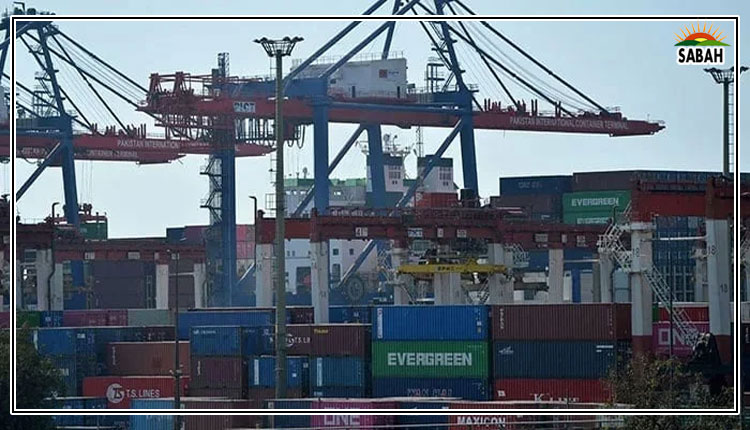Learning from better economies…Amar Z Khan
My recent article in these pages (Reckless borrowing, March 18), while appreciated for its candidness, has also evoked a strong sense of despondence among readers.
The question that pervades everyones mind is how to escape the spiral and whether there is a way out. I must confess that, having waded through both articles and TV programs by economic experts, I have noticed a complete paucity of practically implementable steps for building a journey towards generating foreign revenue. I share below my thoughts based on observations and experiences in countries I have visited and worked in.
The core point is to appreciate that the country must earn, and not borrow, foreign exchange for its domestic consumption. Unless we have more resources, we must curb and rationalize expenditure. This requires the courage to allow wrong businesses to close and radical diversification and upscaling of exports with the help of international collaboration.
Our present preoccupation with protecting import substitution and building exports exclusively off local raw materials or produce will continue to retard our export aspirations. Successful countries look outward to identify gap trends in international demand in the medium term and build and revamp their capacity to service this need gap. This is radically different from our current approach.
Let me share strategies adopted by countries facing similar crises that enabled them to successfully turn around their economies while living within objectives similar to Pakistans. This warrants building a national consensus supported by all political parties. For this, we first need to be transparent with the nation to prepare people for short-term dislocation and hardship, with a view to the light at the end of the tunnel.
First, new FDI should initially be only permitted into predominantly export-generating projects, not import substitution. We have examples to consider here: Malaysia initially required foreign investors to seek cabinet approval which was only given if the project was wholly for exports.
India adopted a similar strategy and it permitted Honda and Coke to invest in the country if the project generated $5 foreign currency income for every $2 of foreign exchange consumed by this investment by way of imports, other foreign expenses, royalties and profit repatriation.
Second, existing businesses and manufacturers whether local or foreign-owned should be informed that they are welcome to sell products and services to meet domestic demand but they must generate their own foreign exchange (through expansion into exports ) for their import needs or source this in a Dutch auction of residual foreign currency left over after the government had met essential needs like foreign currency debt repayment, and other critical essentials (including, oil, defence, exporters import needs).
For instance, Nigeria in 1983 when faced with a similar foreign currency crisis announced that it could no longer underwrite the nation’s foreign currency consuming demand by increasing the country’s foreign currency borrowings. Today, despite similar corruption levels and other fiscal indiscipline, this bankrupt country now boasts a Sovereign Fund as a consequence of import-substituting businesses either dying or retooling and expanding into becoming world-class exporters.
Third, instead of relying on building the export momentum on the back of existing local businesses that had developed a local delivery capacity, countries opted for new manufacturing directly for export for which there was no past local experience.
In the early 1980s, South Korea started exporting washing machines to the Gulf countries even when its local population had not seen or used washing machines. Thailand started manufacturing motor vehicles from scratch at scales, quality and prices that made them competitive for export. Malaysia similarly launched chip manufacturing in Penang in the 90s directly for export without any local use. Vietnam likewise boasts multiple such export projects; Chinas toy manufacturing in the late 1980s is another example. Fourth, the government must admit to the nation that it does not have the capacity to underwrite domestic foreign currency-fueled demand as it cannot afford to increase the countrys foreign debt burden which would have to be borne by future generations. A similar strategy was adopted by Nigeria in the 1980s.
Fifth, a radical shift in agricultural production out of low revenue-yielding crops into higher revenue-generating crops for exports. This policy is complemented by a shift away from a dated perspective of meeting food security through domestic production to instead importing the lower cost crops the production of which has been de-emphasized.It is important to note that China over the past 20 years has de-emphasized production of low-revenue grain (which it now imports) and instead increased from 15 per cent to 55 per cent the proportion of acreage deployed for growing higher-value fruits and vegetables.
Similarly, Malaysia has progressively de-emphasized the growing of rubber trees and vegetables and has shifted its arable acreage to oil palm agriculture.
Sixth, building a national consensus on how the countrys scarce foreign currency should be rationed to maximize sustainable benefits for the country. A prime example to consider is that of Britain. In the 1970s, after the oil price hike, when faced with a severe foreign currency crunch Britain televised multiple national debates to determine how the population would prioritize its foreign currency-consuming choices. Seventh, the export of raw commodities and minerals should be discouraged/prohibited and instead processing for local value addition should be made mandatory and incentivized.
This has been done before. Nigeria over the late 1980s and 1990s reduced crude oil export and invested in refining, crackers and petrochemical plants to convert crude oil into value-added products for exports. Multiple Asian countries including India have also adopted this approach for minerals and commodities extraction.
Eighth, understand the importance of free-floating the exchange rate. The government should not give in to the temptation to manage the currency rate as this will result in greater fiscal deficits or an increase in unaffordable external borrowing. This encourages imports and inhibits exports. Pakistans history of deteriorating balance of trade over the past 70 years illustrates the folly of not adopting this discipline.
Ninth, the country must avoid fiscal deficits. Cut the governments role to what it can afford based on the revenue it earns. The absence of this discipline causes inflation which causes greater poverty for the poor and middle classes; loan interest rates to rise, inhibiting manufacturing and employment; it increases the government’s future debt service obligation further and reduces its future capacity to spend on current needs; and results in spiralling depreciation of the currency
This caution is further heightened for Pakistan given the current governments desire to invest in affordable housing, more public transport, healthcare, education and tree planting Nigeria followed eight out of the nine points. It consequently illustrates all the negative consequences tabulated above. OECD countries by adopting this discipline in the last two decades reflect the consequent benefit of low inflation throughout this period.
Courtesy The News












